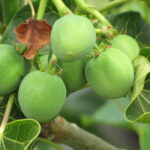ការចិញ្ចឹមត្រី និងជលវប្បកម្ម
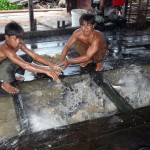
អ្នកនេសាទត្រីកំពុងរៀបចំទ្រុងត្រី។ រូបភាព ថតដោយ O. Joffre/WorldFish, ៣ តុលា ២០០៩។ ក្រោមអាជ្ញាប័ណ្ណ CC BY-NC-ND 2.0។វារីវប្បកម្មមានប្រមាណ ៧ ភាគរយ នៃផលិតកម្មត្រីសរុបនៅកម្ពុជា។ ប្រព័ន្ធវារីវប្បកម្មទឹកសាប រួមមាន បែរ និងទ្រុង ស្រះខ្នាតធំ ស្រះចិញ្ចឹមត្រីតាមគ្រួសារ ស្រះផ្តល់ជម្រកត្រីក្នុងសហគមន៍ (CFR) និងកសិដ្ឋានចិញ្ចឹមត្រីក្នុងស្រែ។ ស្រះចិញ្ចឹមផ្តល់ជម្រកត្រីក្នុងសហគមន៍ គឺជាទម្រង់មួយនៃការបង្កើនបរិមាណត្រី ឬវិធានការអភិរក្សត្រី ដែលមានគោលបំណងបង្កើនផលិតភាពជលផលតាមវាលស្រែ ដោយបង្កើតជម្រកត្រីក្នុងរដូវប្រាំងសម្រាប់មេពូជ ...
ការគ្រប់គ្រង
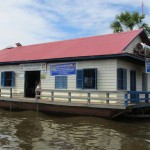
(English) Cambodia’s sub-national administration consists of three tiers: capital city/province, municipality/district and sangkat/commune. Phnom Penh is the capital, and there are 24 provinces, 159 districts (including 26 municipalities and 12 khans), 1406 communes and 227 sangkats. ...
រដ្ឋាភិបាលថ្នាក់ជាតិ
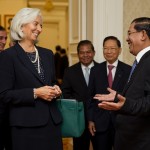
(English) Cambodia is a constitutional monarchy. According to the 1993 Constitution, although he is the head of state, the king has very limited powers compared to the prime minister, the head of the government. Unlike the 1947 Constitution, power does not come from the king ...
រោងចក្រចម្រាញ់ប្រេង
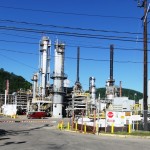
(English) There is currently no oils refinery in Cambodia. Although a refinery has been planned, its construction has been delayed several times, reportedly over financing difficulties. ...
អង្គការសហប្រជាជាតិ
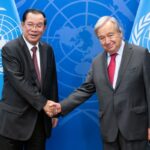
អគ្គលេខាធិការ Antonio Guterres (ស្តាំ) ជួបពិភាក្សាការងារជាមួយ សម្តេចអគ្គមហាសេនាបតីតេជោ ហ៊ុន សែន នាយករដ្ឋមន្ត្រីនៃព្រះរាជាណាចក្រកម្ពុជា នៅទីក្រុងញូវយ៉ក។ រូបថតពីគេហទំព័រអង្គការសហប្រជាជាតិនៅថ្ងៃទី២២ ខែកញ្ញា ឆ្នាំ២០២២។អង្គការសហប្រជាជាតិ (UN) ត្រូវបានបង្កើតឡើងក្នុងឆ្នាំ ១៩៤៥ និងដឹកនាំដោយធម្មនុញ្ញអង្គការសហប្រជាជាតិ គឺជាអង្គការអន្តរជាតិមួយដែលមានសមាជិកចំនួន ១៩៣។41 អង្គការសហប្រជាជាតិមានអង្គសំខាន់ៗចំនួនប្រាំមួយ៖ មហាសន្និបាត ក្រុមប្រឹក្សាសន្តិសុខ ក្រុមប្រឹក្សា ...
ការបំពុលបរិស្ថាន និងកាកសំណល់
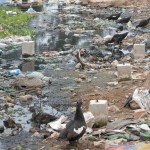
(English) The rapid economic and population growth in Cambodia is leading to significant environmental pollution. The economic development activities have generated major environmental consequences, including air pollution, water pollution, noise pollution and solid wastes. ...
ជនជាតិភាគតិច និងជនជាតិដើមភាគតិច
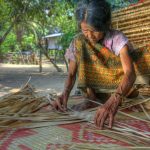
យោងតាមជំរឿនប្រជាជនទូទៅឆ្នាំ២០១៩ របស់ព្រះរាជាណាចក្រកម្ពុជា ប្រជាជនកម្ពុជាសរុបមានចំនួនប្រមាណ ១៥.៥៥២.២១១នាក់ (ស្ត្រី ៥១,៣១ភាគរយ)។84 ចំនួនប្រជាជនបានកើនឡើងដល់ ១៦.៥៨៩.០២៣នាក់នៅឆ្នាំ២០២១។85 ជនជាតិវៀតណាម ចិន ចាម និងជនជាតិភាគតិចផ្សេងទៀត ...
ការជួញដូរកាបូន និងការចំណាយប្រាក់ដទៃទៀត ដើម្បីទទួលបានសេវាកម្មអេកូឡូស៊ី
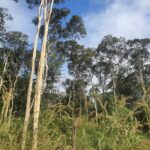
ស្ថានភាពព្រៃឈើ។ រូបភាព អង្គការទិន្នន័យអំពីការអភិវឌ្ឍ ថតនៅថ្ងៃទី ០៥ ខែធ្នូ ឆ្នាំ២០២១។ ក្រោមអាជ្ញាបណ្ណ CC BY-SA 4.0។ប្រទេសកម្ពុជាគ្របដណ្តប់ដោយព្រៃឈើដែលមានចំនួនប្រហែល ១៣,១ លានហិកតា ក្នុងឆ្នាំ១៩៧៣ ហើយវាបានធ្លាក់ចុះមកនៅត្រឹម ៨,៧ លានហិកតាក្នុងឆ្នាំ២០១៤។123 យោងទៅតាមក្រសួងបរិស្ថាន ព្រៃឈើបានគ្របដណ្តប់ ៧៣% នៃផ្ទៃដីសរុបក្នុង ...
បរិស្ថាន និងធនធានធម្មជាតិ
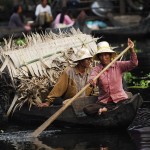
ប្រហែលបីភាគបួននៃប្រជាជនកម្ពុជាពឹងផ្អែកលើកសិកម្ម ទិន្នផលព្រៃឈើ និងនេសាទដើម្បីចិញ្ចឹមជីវិត។ ដូច្នេះ ការថែរក្សាបរិស្ថាន និងគ្រប់គ្រងធនធានធម្មជាតិមានសារៈសំខាន់ណាស់។ ការបាត់បង់ព្រៃឈើនៅកម្ពុជាមានទ្រង់ទ្រាយធំ។ ពីឆ្នាំ១៩៩០ ដល់ឆ្នាំ២០០៥ កម្ពុជាបាត់បង់គម្របព្រៃឈើបឋម៦%ក្នុងមួយឆ្នាំ។ ប្រសិនបើអត្រាបាត់បង់ព្រៃឈើនៅតែបន្តដូចអត្រាកាលពីឆ្នាំ ២០០០ ដល់២០០៥ទៀត កម្ពុជានឹងបាត់បង់ព្រៃឈើ ២.៧ លានហិចតាបន្ថែមទៀតនៅឆ្នាំ២០២០។ [...] ...
ផលិតកម្មថាមពលដែលមិនកើតឡើងវិញ
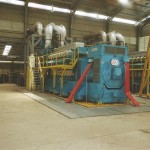
(English) Non-renewable energy sources are chiefly fossil fuels such as coal, diesel, oil and gas. They provide most of Cambodia’s locally-produced electrical supply – in 2011 diesel and heavy fuel oil generators provided 89% of local electricity generation. ...
អង្គនីតិប្រតិបត្តិ
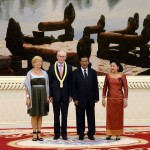
(English) The Royal Government of Cambodia (RGC) represents the executive wing of government. it is responsible for implementing laws and directing general affairs of the state in accordance with policy programs and state planning approved by parliament (the National Assembly and Senate). ...
ជំនួយពីប្រទេសអូស្ត្រាលី
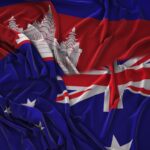
នាយករដ្ឋមន្ត្រីប្រទេសអូស្ត្រាលី ឯកឧត្តម អេនសូនី អាល់បូនីស៊ី និងលោកនាយករដ្ឋមន្ត្រី ហ៊ុន សែន នៅរាត្រីសមោសរជូនប្រមុខរដ្ឋ/រដ្ឋាភិបាល/ប្រតិភូអាស៊ាន ប្រមុខរដ្ឋ/រដ្ឋាភិបាល/ប្រតិភូនៃប្រទេសដៃគូសន្ទនាអាស៊ាន នៅថ្ងៃទី១២ ខែវិច្ឆិកា ឆ្នាំ២០២២។ រូបភាព ពីក្រសួងការបរទេស និងសហប្រតិបត្តិការអន្តរជាតិ។កម្ពុជា និងអូស្ត្រាលីបានបង្កើតទំនាក់ទំនងការទូតរបស់ពួកគេនៅឆ្នាំ១៩៥២។ ទំនាក់ទំនងទ្វេភាគីនេះអនុញ្ញាតឱ្យកម្ពុជាទទួលបានអត្ថប្រយោជន៍ និងការកែលម្អដោយការចូលរួមក្នុងបញ្ហាទ្វេភាគី បញ្ហាតំបន់ និងបញ្ហាយុទ្ធសាស្ត្រ។189 ប្រទេសទាំងពីរបានធ្វើការ ...
ប្រភេទនៃតំបន់ការពាររបស់រដ្ឋ
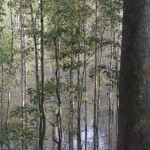
ព្រៃលិចទឹកនៅកម្ពុជា។ រូបភាព ថតដោយ Andrea Kirkby, ១១ ឧសភា ២០១៤។ ក្រោមអាជ្ញាប័ណ្ណ CC BY-NC 2.0។ព្រះរាជក្រឹត្យឆ្នាំ១៩៩៣ បានបង្កើតតំបន់ការពារចំនួន២៣កន្លែង គ្របដណ្តប់លើផ្ទៃដី ៣,២៧៣,៣០០ ហិកតា ស្មើនឹង១៨ ភាគរយ នៃផ្ទៃដីសរុបរបស់ប្រទេសកម្ពុជា ហើយតំបន់ទាំងនោះ ស្ថិតនៅក្រោមការគ្រប់គ្រងក្រសួងបរិស្ថាន។210 ប្រព័ន្ធតំបន់ការពារ ត្រូវបានបែងចែកជាតំបន់បួនប្រភេទខុសគ្នា៖211ឧទ្យានជាតិ៖ តំបន់អភិរក្សសម្រាប់ធម្មជាតិនិងទេសភាព ត្រូវបានការពារក្នុងគោលបំណង វិទ្យាសាស្រ្ត អប់រំ និងការកម្សាន្ត។ដែនជម្រកសត្វព្រៃ៖ តំបន់អភិរក្សនៅក្នុងស្ថានភាពធម្មជាតិ ដើម្បីការពារសត្វព្រៃ រុក្ខជាតិ និងតុល្យភាពអេកូឡូស៊ី។ការពារទេសភាព៖ តំបន់ដែលត្រូវបានរក្សា ជាចំណុចទេសភាពសម្រាប់ការកម្សាន្ត និងទេសចរណ៍។តំបន់ប្រើប្រាស់ច្រើនយ៉ាង៖ តំបន់ដែលចាំបាច់សម្រាប់ស្ថេរភាពនៃធនធានទឹក ព្រៃឈើ សត្វព្រៃ និងនេសាទ ហើយតំបន់នេះក៏ត្រូវបានការពារសម្រាប់ការកំសាន្ត និងសម្រាប់ការអភិរក្សធម្មជាតិ ជាមួយនឹងទិដ្ឋភាពនៃការធានាការអភិវឌ្ឍសេដ្ឋកិច្ច។ប្រព័ន្ធតំបន់ការពារកម្ពុជា ប្រើប្រាស់ការចាត់ថ្នាក់តំបន់ការពារ របស់អង្គការសហភាពអន្តរជាតិ ...
ស្ពាន់
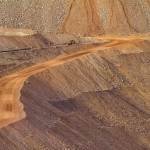
ការរុករករ៉ែស្ពាន់ ត្រូវបានប្រមូលផ្តុំនៅខេត្តព្រះវិហារ ដែលឋិតនៅភាគខាងជើងនៃប្រទេសកម្ពុជា។ ក្រុមហ៊ុនរុករកដែលមានសកម្មភាពច្រើនជាងគេ គឺក្រុមហ៊ុន Geopacific Resources ដែលមានមូលដ្ឋាននៅប្រទេសអូស្ត្រាលី។ក្រុមហ៊ុននេះមានសហប្រតិបត្តិការជាមួយក្រុមហ៊ុនរ៉ូយ៉ាល់គ្រុបរបស់អ្នកឧកញ៉ាគិតម៉េង ។ ក្រុមហ៊ុន Geopacific Resources កំពុងធ្វើការជាមួយក្រុមហ៊ុនរ៉ូយ៉ាល់គ្រុប ដែលមានមូលដ្ឋាននៅកម្ពុជាទៅលើគម្រោងគូសា។ គូសា ជាគម្រោងរុករកមួយនៅលើផ្ទៃដីទំហំ ១៥៨គីឡូម៉្រែតការេ នៅក្នុងតំបន់ប្រាសាទព្រះវិហារដែលបានចាប់ផ្តើមការរុករកក្នុងឆ្នាំ២០១៣។ ...
ទំនិញ ការកែច្នៃ និងផលិតផលកសិកម្ម
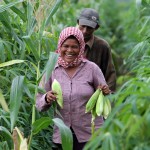
កសិករប្រមូលផលពោតពីកសិដ្ឋានរបស់ពួកគេ នៅកម្ពុជា។ រូបភាព ថតដោយ ធនាគារពិភពលោក/ឆ សុគន្ធា, ១៧ កក្កដា ២០១៣។ អាជ្ញាប័ណ្ណ CC BY-NC-ND 2.0ទំនិញ និងផលិតផលកសិកម្មសំខាន់ៗ មានស្រូវអង្ករ កៅស៊ូ ពោត បន្លែ ផ្លែឈើ និងដំឡូងមី។ នៅឆ្នាំ ២០១៥ ជាង៩០ភាគរយនៃការនាំចេញកសិផលនៃប្រទេកម្ពុជា ត្រូវបានរំពឹងទុកថា ជាផលិតផលមិន ទាន់កែច្នៃ។240កំណើនផលិតកម្មកសិកម្ម ...
វិវាទស៊ីវិល និងពាណិជ្ជកម្ម
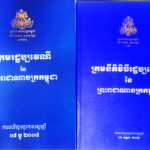
ចាប់តាំងពីឆ្នាំ ១៩៩៣ រាជរដ្ឋាភិបាលកម្ពុជាបានធ្វើការកែទម្រង់ក្របខ័ណ្ឌច្បាប់របស់ប្រទេសទាំងមូល ជាពិសេសការអនុវត្តយុត្តិធម៌ ដើម្បីផ្តល់នូវប្រព័ន្ធនីតិវិធីច្បាស់លាស់ និងពិតប្រាកដមួយសម្រាប់បុគ្គលម្នាក់ៗ ដើម្បីធានាការគោរពសិទ្ធិ និងសមភាពរបស់ពួកគេនៅចំពោះមុខតុលាការ។ ...
ការបំពុលទឹក
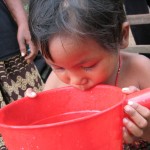
កុមារផឹកទឹកស្អាត នៅប្រទេសកម្ពុជា។ រូបភាព ថតដោត សេស៊ីលា ស្នាយឌឺ, ១២ កក្កដា ២០០៣។ ក្រោមអាជ្ញាប័ណ្ណ CC BY-NC-ND 2.0ការបំពុលទឹក អាចត្រូវបានគេឱ្យនិយមន័យច្រើនយ៉ាងផ្សេងៗពីគ្នា។ ជាទូទៅ ការបំពុលទឹក គឺជាការធ្វើឱ្យកង្វក់ដល់ទឹក នៅពេលដែលសារធាតុបំពុលនានាបានហូរចូលទៅក្នុងប្រភពទឹកដោយមិនបានឆ្លងកាត់ការធ្វើប្រព្រឹត្តកម្ម (ដកយកសារធាតុបំពុលចេញ)។ ការ ...
ការឃ្លាំមើលតុលាការ
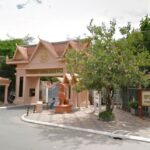
ការគោរពសម្រាប់គុណតម្លៃខ្ពស់ គឺជាគន្លឹះនៃភាពជឿទុកចិត្តរបស់ប្រជាពលរដ្ឋនៅក្នុងតុលាការ។347 គុណតម្លៃអន្តរជាតិដែលត្រូវបានទទួលស្គាល់សម្រាប់ចៅក្រមទាំងអស់ រួមមាន ភាពឯករាជ្យ និងភាពមិនលំអៀង ភាពស្មោះត្រង់ សមភាពនៃការឱ្យតម្លៃ ...
ធនធានប្រេង និងឧស្ម័ន
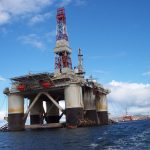
ប្រេង និងឧស្ម័នត្រូវបានរកឃើញនៅលើទឹកដី ប្រទេសកម្ពុជា ប៉ុន្តែមិនមានការទាញយកជាលក្ខណៈឧស្សាហកម្មណាមួយបានចាប់ផ្តើមនៅឡើយទេ។ ផលិតផលប្រេងគ្រប់ប្រភេទសម្រាប់បំពេញតម្រូវការក្នុងស្រុកត្រូវបាននាំចូល។ តួរលេខតម្រូវការប្រេងឥន្ធនៈប៉ានស្មានគឺ ៤៧ ៤៩០បារ៉ែលក្នុងមួយថ្ងៃ។ ការប្រើប្រាស់នេះកំពុងនឹងកើនឡើង។ កម្ពុជាបាននាំចូលប្រេងចំនួន ៤៥៣ ០០០តោន ក្នុងរយៈពេល៣ខែដំបូងនៃឆ្នាំ២០១៤ ដែលជាកំណើន ១០% បើធៀបទៅនឹងរយៈពេលដដែលក្នុងឆ្នាំ២០១៣។ ...


